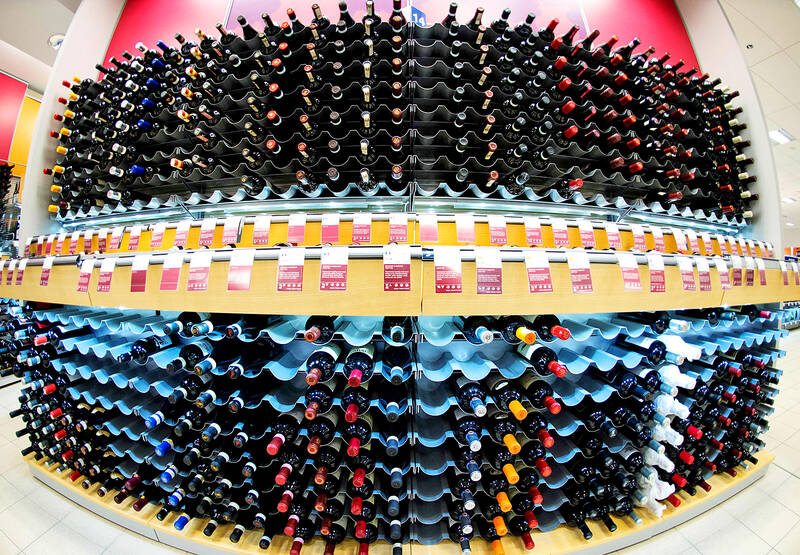To say yes to that glass of wine or beer, or just get a juice? That’s the question many people face when they’re at after-work drinks, relaxing on a Friday night, or at the supermarket thinking about what to pick up for the weekend. I’m not here to opine on the philosophy of drinking, and how much you should drink is a question only you can answer. But it’s worth highlighting the updated advice from key health authorities on alcohol. Perhaps it will swing you one way or the other.
It’s well-known that binge-drinking is harmful, but what about light to moderate drinking? In January last year, the WHO came out with a strong statement: there is no safe level of drinking for health. The agency highlighted that alcohol causes at least seven types of cancer, including breast cancer, and that ethanol (alcohol) directly causes cancer when our cells break it down.
Reviewing the current evidence, the WHO notes that no studies have shown any beneficial effects of drinking that would outweigh the harm it does to the body. A key WHO official noted that the only thing we can say for sure is that “the more you drink, the more harmful it is — or, in other words, the less you drink, the safer it is.”

Photo: AFP
It makes little difference to your body, or your risk of cancer, whether you pay £5 (US$6.50) or £500 (US$650) for a bottle of wine. Alcohol is harmful in whatever form it comes in.
Countries have started adopting this position in their national guidance. For example, last year Canada introduced new national recommendations saying that abstinence is the only risk-free approach, and noting that two drinks (approximately four units) a week is low-risk. This was a change from 2011 when the guidance allowed a maximum of 10 drinks (about 20 units) and 15 drinks (about 30 units) for women and men respectively. The NHS has adopted the language of “no completely safe level of drinking,” with the guidance not to drink more than 14 units, or about six glasses of wine/pints of beer a week.
What about red wine? Wasn’t this supposed to be good for us? Two decades back, studies emerged that hinted that red wine could benefit the heart, especially as part of a Mediterranean diet. However, some of these studies didn’t control for the fact that red wine drinkers were more likely to be educated, wealthy, physically active, eat vegetables and have health insurance. In 2006, in a new analysis that controlled for health-affecting variables, the benefits of drinking red wine weren’t found. Since then, increasing evidence has shown that even one glass of wine a day increases the risk of high blood pressure and heart problems.
The alcohol industry has been savvy here and funded studies that — surprise, surprise — show the benefits of moderate drinking. This is a lesson in why you should always look at who funds the study, and whether there’s a conflict of interest. The muddying of studies by commercial interests (a tactic that was also famously used by the tobacco industry) led to statements, like from economist Emily Oster, that having one drink a day during pregnancy is safe. This has been debunked: fetal brain imaging in 2022 showed that even one alcoholic drink a week during pregnancy harms the baby’s developing brain.
To summarize, there’s widespread consensus that alcohol poisons our bodies. This isn’t a moral judgment: it is what large-scale epidemiological studies have shown. This should inform government policies such as health warnings on alcohol labels, bans on multi-buy promotions, restrictions on marketing and advertising, and greater awareness of the health risks of drinking. Yet, we have to be careful not to descend into puritanism. We live in a democracy where people have the freedom to drink and make choices about their health.
And I’ll admit that even though I work in public health, I continue to have a drink from time to time. Each day, we humans make decisions over the risks we take, and those of us who work in public health have to remember that not everyone is concerned only with living longer; feeling satisfied in how we live each day is also important. We eat that doughnut or bag of crisps, even though we know it’s not great for us, just as we drive long distances on motorways knowing there’s always the risk of a fatal traffic accident. And with alcohol, for many people there’s happiness in sharing a bottle of wine or grabbing a few pints with friends.
There’s no moral judgment in how people choose to live their life and the choices they make. But, yes, drinking carries a health risk, and it’s worth us, and governments, finally acknowledging this fact, even if we’d prefer not to think about it.

The Democratic Progressive Party (DPP), Chinese Nationalist Party (KMT), and the country’s other political groups dare not offend religious groups, says Chen Lih-ming (陳立民), founder of the Taiwan Anti-Religion Alliance (台灣反宗教者聯盟). “It’s the same in other democracies, of course, but because political struggles in Taiwan are extraordinarily fierce, you’ll see candidates visiting several temples each day ahead of elections. That adds impetus to religion here,” says the retired college lecturer. In Japan’s most recent election, the Liberal Democratic Party lost many votes because of its ties to the Unification Church (“the Moonies”). Chen contrasts the progress made by anti-religion movements in

Taiwan doesn’t have a lot of railways, but its network has plenty of history. The government-owned entity that last year became the Taiwan Railway Corp (TRC) has been operating trains since 1891. During the 1895-1945 period of Japanese rule, the colonial government made huge investments in rail infrastructure. The northern port city of Keelung was connected to Kaohsiung in the south. New lines appeared in Pingtung, Yilan and the Hualien-Taitung region. Railway enthusiasts exploring Taiwan will find plenty to amuse themselves. Taipei will soon gain its second rail-themed museum. Elsewhere there’s a number of endearing branch lines and rolling-stock collections, some

This was not supposed to be an election year. The local media is billing it as the “2025 great recall era” (2025大罷免時代) or the “2025 great recall wave” (2025大罷免潮), with many now just shortening it to “great recall.” As of this writing the number of campaigns that have submitted the requisite one percent of eligible voters signatures in legislative districts is 51 — 35 targeting Chinese Nationalist Party (KMT) caucus lawmakers and 16 targeting Democratic Progressive Party (DPP) lawmakers. The pan-green side has more as they started earlier. Many recall campaigns are billing themselves as “Winter Bluebirds” after the “Bluebird Action”

Feb 24 to March 2 It’s said that the entire nation came to a standstill every time The Scholar Swordsman (雲州大儒俠) appeared on television. Children skipped school, farmers left the fields and workers went home to watch their hero Shih Yen-wen (史艷文) rid the world of evil in the 30-minute daily glove puppetry show. Even those who didn’t speak Hoklo (commonly known as Taiwanese) were hooked. Running from March 2, 1970 until the government banned it in 1974, the show made Shih a household name and breathed new life into the faltering traditional puppetry industry. It wasn’t the first